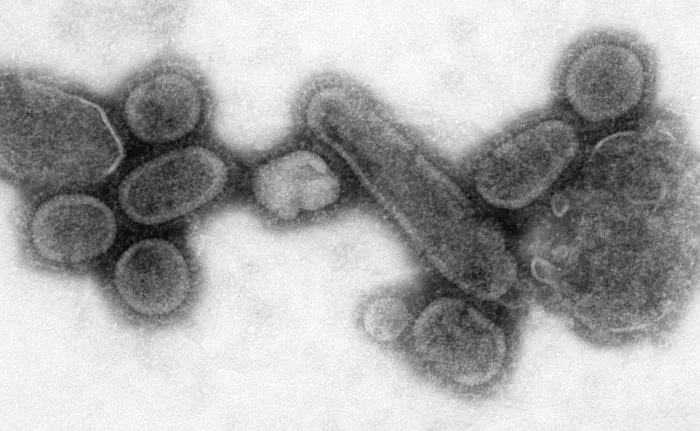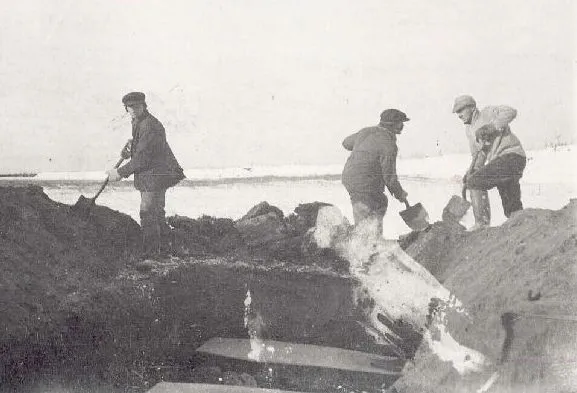It’s 6 AM on a warm August day in 1997. The temperature is forecasted to reach about 50°F (10°C). A muted magenta glow blankets rolling hills, sunlight returning to the bitterly cold grassland. It hasn’t been gone long – just 6 hours ago that same sun dropped below the southwestern horizon, right around midnight.
Now that it’s back from brief retreat, 73-year-old Johan Hultin is beginning to dig. At least, he’s beginning the process of digging. First, he needs to heat the frigid earth, Alaska’s perpetually frozen soil known as “permafrost.” To do this, he and his hearty Inuit recruits are blasting the ground with steam. When the topsoil is soft enough to penetrate, they will use spades to dig until they hit more frozen dirt. Back to the steam. Then more digging. Steam. Dig. Steam. Dig.
What are they looking for? What underground secrets could possibly be worth this mud-soaked, laborious, and physically exhausting process?
 Electron micrograph of the 1918 influenza.
Electron micrograph of the 1918 influenza.Hultin and his team are looking for answers to a question that had loomed over the world for 8 decades: what killed 5% of the global population in the year 1918? Ostensibly, the cause was known – a viral influenza unlike any the world had seen before. But Hultin’s mission in August of 1997 was to help unravel the how and the why.
Given that influenzas typically overwhelm immune systems of the elderly, the very young, or the already ill, why did this one wipe out millions in their 20s and 30s at peak health?
How did such a deadly virus come to be and how was it transmitted the world over?
And lastly, what clues can we glean from this ancient killer to prevent such a worldwide catastrophe from ever happening again?
 Canadian men dig a mass grave for the overwhelming number of victims.
Canadian men dig a mass grave for the overwhelming number of victims.Its story, as we will see, is one of unfortunate circumstance, enormous suffering, and persistent scientific detective work. We’ll also see how the 1918 flu changed our understanding of the virus itself, helping researchers a century later as they work to develop a holy grail of modern medicine: the universal flu vaccine.
In the next episode, we’ll shoot back to 1918 to explore the historical context of this viral killer and to begin recounting the immense agony it produced.
See you next week Steemers!
Image credits:
Flu virus - Wikimedia Commons
Grave - Wikimedia Commons